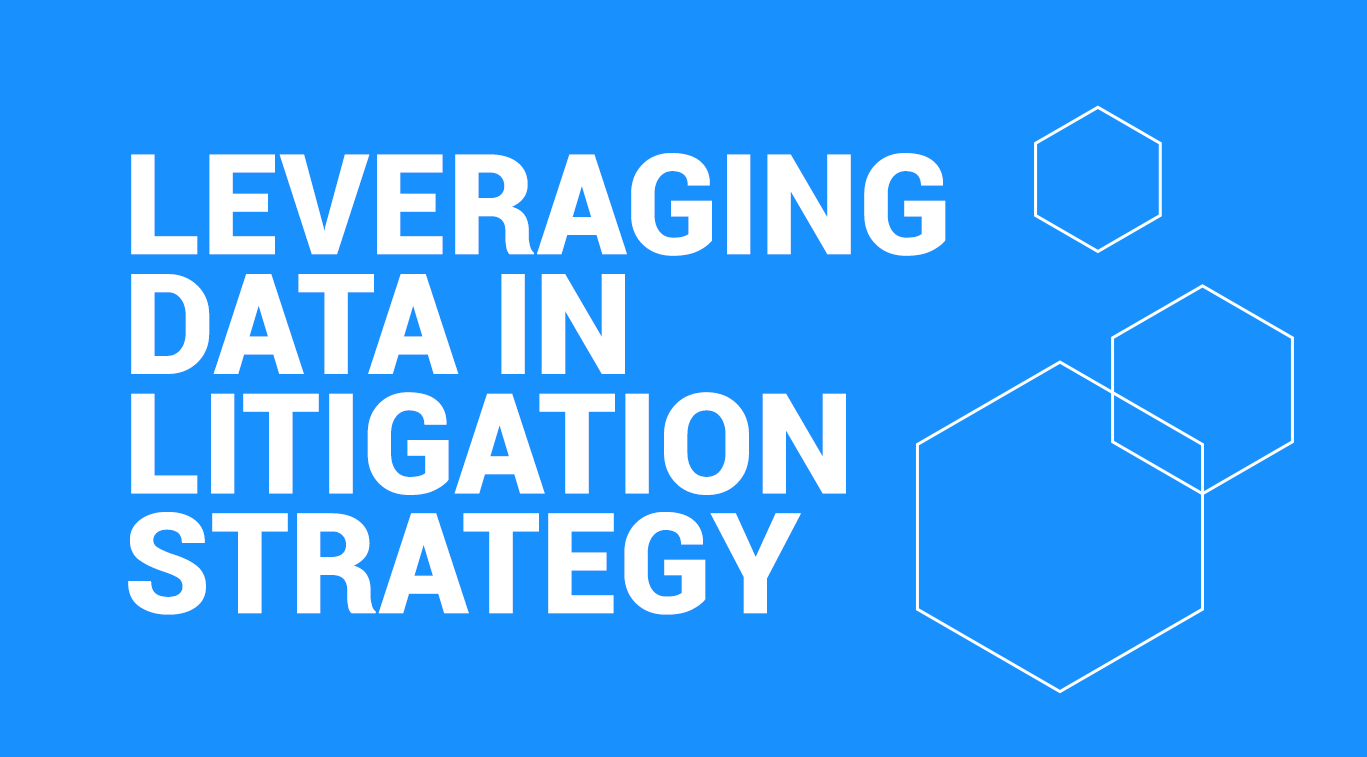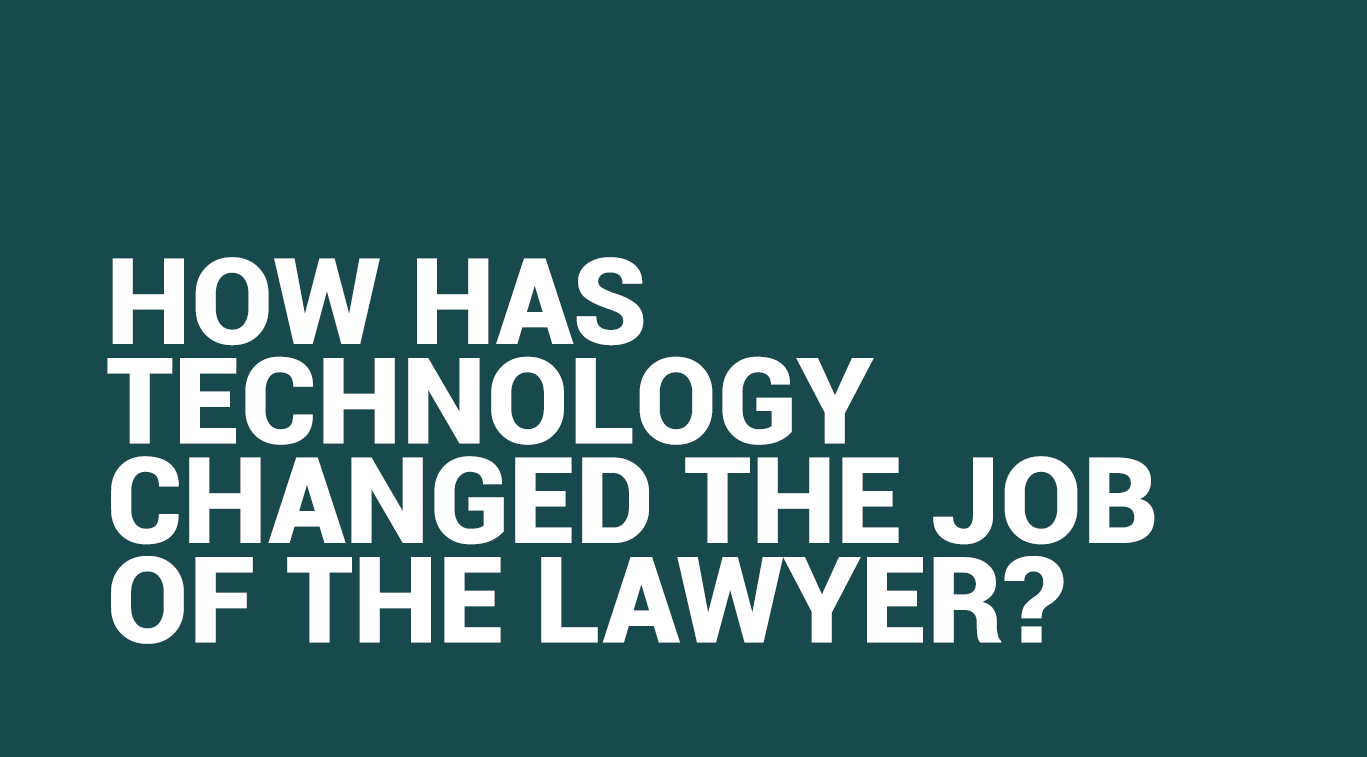Leveraging Data in Litigation Strategy

Written by Maryam Khan
Blogger

The pandemic has accelerated the use of technology in the court system and within the wider legal sector. There is now widespread use of virtual court hearings, electronic bundles and automated decision making in the lower courts. The integration of legal technology solutions has made processes a lot more convenient and more cost-effective. One of these integrations is litigation analytics, an important technological development used to provide data-driven insights and bring down the cost of litigating. These developments are transforming legal service delivery to ensure that law firm’s enjoy the benefits of such technology long after the pandemic. Law firms such as Herbert Smith Freehills and HFW are ahead of the litigation analytics game as they were among the first firms to partner with litigation analytics solution providers to optimise their legal service delivery [1]. This article discusses the benefits of litigation analytics in developing a strong litigation strategy alongside the challenges associated with using the right data to generate accurate insights.
What is Litigation Analytics?
The term ‘litigation analytics’ refers to research tools that identify trends or patterns in resolving disputes in the court system. The tools identify how such trends or patterns change when the nature of the dispute, jurisdiction or judge assigned is different. Litigation analytics software also includes dashboards and data visualisation features that highlight the outcome of different strategies, allowing lawyers to make better predictions for their clients [2].
Data analytics for lawyers and litigation analytics have become extremely prevalent in the legal sector. Law firms, companies, courts, judges and government authorities are leveraging data analytics to reduce costs and operate more productively. Simply put, litigation analytics tools and software are built on a colossal database of reported judgments dissected in many different ways. Following an in-depth and detailed data analysis, litigation analytics tools help lawyers and businesses answer the following questions regarding an upcoming case;
- What percentage of a specific case has been won, lost or settled in the past?
- How has a judge ruled on similar cases in the past?
- How has the defendant behaved in past legal proceedings?
- How has the defendant reacted to a similar claim against them?
- Which lawyers have acted on these claims in the past?
- What is the lawyer’s success rate?
- How many cases has the opposing law firm won in the past?
These insights are extremely important in understanding the right approach to take when dealing with a piece of litigation. The software generates valuable data-driven insights into the past litigation records of law firms, attorneys, courts and judges regarding trends in findings, damages, resolutions, and remedies [3]. The insights generated through litigation analytics almost function as a roadmap, guiding lawyers and legal professionals to ensure they develop the correct litigation strategy or business development plan [4]. However, this roadmap will only be beneficial if the insights generated are based on complete and accurate data. If incorrect data is used, false and misleading insights are generated, which can completely misguide the lawyer resulting in the client being put at a major disadvantage. Litigation analytics is an incredibly powerful tool that empowers lawyers with winning insights. However, this is only possible if the data generated from the insights is complete and accurate [5].
How Can Law Firms Leverage Litigation Analytics?
Nearly 66% of legal analytics users surveyed in the LexisNexis and LexMachina 2022 Legal Analytics Study believe that legal analytics makes them better and more informed lawyers [6]. Moreover, 74% of legal analytics users confirmed that successful litigation is the key driver for adopting legal analytics [7]. Litigation analytics software shapes a law firm’s litigation strategy. It allows lawyers to better understand court tendencies, manage client expectations, mitigate risks, and efficiently allocate resources.
Developing a winning litigation strategy
The volumes of data processed by litigation analytics software increase possible events or outcomes [8]. This data processing helps law firms understand how judges reach their decisions, the opposing law firm’s likelihood to settle the case, which arguments may be more successful based on previous case history and judge rulings. Moreover, an article by Forbes also highlights that advanced data mining and analytics in litigation enables early case strategy formation [9]. Litigation software refines volumes of data to generate valuable insights that can be actioned to win a case successfully. Litigation analytics is also helpful when developing a settlement strategy. Having access to unique insights allows lawyers to understand how long they can expect a motion to be pending and how a judge is likely to rule on particular cases. These key points allow lawyers to understand which party has an advantage during settlement negotiations [10]. While a lawyers’ intuition or gut instinct based on years of experience is extremely valuable to clients, litigation analytics adds a decisive data-driven element to the lawyers’ intuition, making it more risk averse.
Developing a better understanding of court tendencies
Insights generated through litigation analytics allow lawyers to answer several questions thrown at them by clients regarding the risks and probabilities of success associated with proceeding with a case before a specific judge or court. These insights include visuals that display previous findings by individual judges in similar cases, reports of how much a particular judge has previously awarded damages in similar cases and the likelihood of a particular judge granting or rejecting a specific motion [11]. Having access to such data insights can heavily influence a lawyer’s litigation strategy. Knowing which argument has succeeded with a particular judge with similar cases in the past is a powerful piece of information that can shape a law firm’s entire approach to litigation. Lastly, suppose a lawyer appears before a judge they have never encountered. In that case, they will want all the information they can get on the judge and the cases they have ruled on. Litigation analytics helps gather all this information in one go without having to spend hours reading lengthy judgments to find the information you are looking for [12].
Managing client expectations with increased transparency
Managing client expectations is a crucial component in quality legal service delivery. While lawyers are mostly concerned with the best way to advise their clients, clients are more concerned with being constantly updated regarding existing or potential issues, keeping costs down and, of course, the outcome of the case [13]. As a result, clients continue to ask their lawyers questions that require some degree of predicting the future, e.g. how much will this cost? When will the judge rule on a motion? What will be the likely outcome?
Litigation analytics are used to answer these questions without relying on hunches or word of mouth, which can sometimes be inaccurate and unreliable. These questions are answered using historical data, resulting in the client having reasonable expectations regarding the outcome of a particular case. Lawyers can provide their clients with data-backed updates and probabilities, accurate case valuations, and the overall scope of litigation during client meetings without spending a ridiculous amount of time manually researching and analysing all the findings. This saves lawyers from having to do tedious tasks and results in happier clients as law firms have easy access to such information. The use of litigation analytics enables greater transparency between lawyers and their clients sharing pertinent data assists clients in understanding their litigation strategy each step of the way [14].
Improving legal team dynamics and building client relationships.
Litigation analytics and data analytics in the legal sector are enabling legal teams to work more efficiently and are contributing to their happiness [15]. As discussed earlier, litigation analytics facilitates transparency between a lawyer and their client, establishing a stronger business relationship with clearer expectations. This stronger relationship results in fewer miscommunications or disputes occurring, especially when clients believe they do not have enough information or communication with their lawyers. This is particularly important within litigation, an area of law characterised by conflict and working under pressure to meet tight deadlines. This reduces stress levels in a law firm by ensuring the client is satisfied and reduces the chances of any unpredictable events occurring as insights are generated to predict the most likely outcome, allowing legal teams to mitigate any risks. Therefore, having a stronger relationship with your client increases the overall happiness and productivity of the team. Lastly, insights generated from litigation analytics can also reduce conflicts within a legal team as lawyers and clients collectively make data-driven decisions to achieve the desired outcome cost-effectively [16].
Effective resource allocation and strategy planning in light of current litigation trends
The current socio-political climate being extremely volatile calls for law firms to be more risk-averse and aware of litigation trends surrounding the Covid-19 pandemic, Brexit and economic sanctions following international conflicts. Litigation analytics software tracks new case filings that reference such events and trends by simply entering the correct keywords. This allows law firms to assess the number of claims resulting from the pandemic in a particular practice area and estimate their workload to allocate their staff and resources accordingly [17]. For example, litigation analytics software can highlight which insurance policies or commercial contracts have increased Covid-19 related litigation. This allows firms to improve their resource allocation strategy, but it also allows the firm to advise its clients better regarding claims they can make or may have to defend.
Analysing litigation data allows firms to assess the likelihood of liability arising from common claims relating to a socio-political development or regulatory change [18]. For example, suppose a law firm is advising a gym that generates revenue through memberships. In that case, the law firm can use litigation analytics software to assess previous cases regarding membership cancellation policies in light of gym closures following government social distancing regulations. This allows law firms to better advise their clients on tailoring their cancellation policies to avoid mass liability and mitigate any risks [19].
What Are The Challenges Associated With Litigation Analytics?
While litigation analytics software is an innovative tool that significantly improves legal service delivery, a few issues need to be addressed. Firstly, law firms need to ensure they collect, store, and process law firm data correctly. If unreliable or unstructured data is processed, analytics software produces inaccurate and misleading insights, impacting the firm’s litigation strategy. The processing of clean and usable data is a struggle in every industry that incorporates data analytics into its business development strategy. Additionally, it is extremely difficult and complicated to collect historical information about every lawyer, judge, court, and firm. Law firms undergo structural challenges, lawyers move from one firm to another, and so do judges on particular cases, making it difficult to keep track of all this information [20].
Secondly, there is a lack of standardised terminology across the legal sector, impacting legal database keyword searches. While standardised terminology allows for easy information identification in court judgements, each court, judge and jurisdiction have their own expressions for court documents and legal terms, making it difficult to locate data using a single search algorithm [21]. Therefore, it may take a while to develop an advanced search algorithm that incorporates different linguistic expressions and legal terminology.
Lastly, it is quite complicated to incorporate litigation analytics in high-value, high-complexity disputes than low-value, high-volume disputes [22]. For artificial intelligence and machine learning-based software to function successfully, large volumes of data need to be processed. It is difficult to collect and process historical data on big disputes that are unique and complicated. Therefore, human understanding and analysis compared to artificial intelligence are best suited for cases surrounding rare facts with no historical data from past precedents to collect and generate insights.
Final Words
The legal sector capitalises on data analytics to provide its clients with a winning litigation strategy and innovative legal services. Litigation analytics software is expected to grow as the importance of data in business development continues to increase. Despite the few concerns associated with litigation analytics software, the LexisNexis 2022 Annual Survey revealed that 68% of law firms use legal analytics, a 7% increase over the year before [23]. This rise suggests that the number of law firms that value-generating insights from data are increasing, and those firms have understood the benefits of data analytics from both legal practice and business perspectives.
[2]https://libguides.law.umn.edu/c.php?g=884434&p=6379559
[3] https://www.lawjournalnewsletters.com/2021/11/01/the-roadmap-of-litigation-analytics/
[4] https://www.lawjournalnewsletters.com/2021/11/01/the-roadmap-of-litigation-analytics/
[5] https://www.lawjournalnewsletters.com/2021/11/01/the-roadmap-of-litigation-analytics/
[6]https://pages.lexmachina.com/Legal-Analytics-Survey-2022_LP.html
[8] https://legal.thomsonreuters.com/en/insights/articles/5-tangible-benefits-of-litigation-analytics
[9]https://www.forbes.com/?sh=5296e4e62254
[10] Ibid (8)
[13] Ibid
[15] https://attorneyatlawmagazine.com/the-4-surprising-benefits-of-legal-analytics-tools
[16] Ibid
[17]https://www.attorneyatwork.com/legal-analytics-in-covid-19-litigation/
[18] Ibid
[19] Ibid
[20]https://www.legalbusinessworld.com/post/2020/06/04/legal-analytics-its-perils-and-its-promises
[21] Ibid








